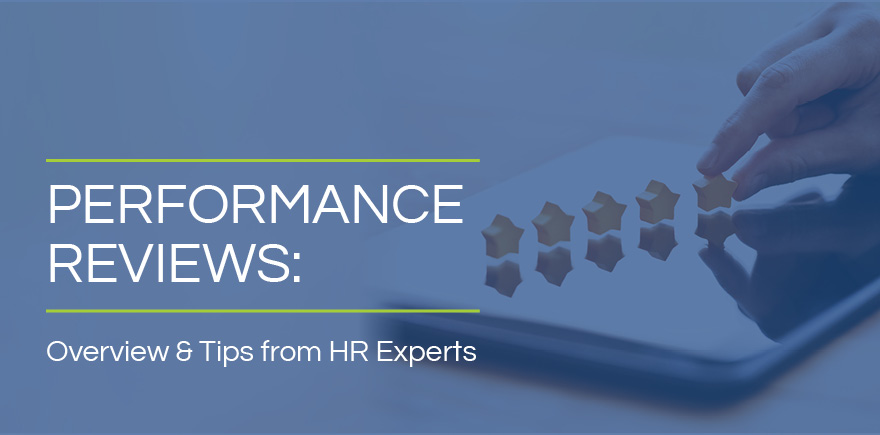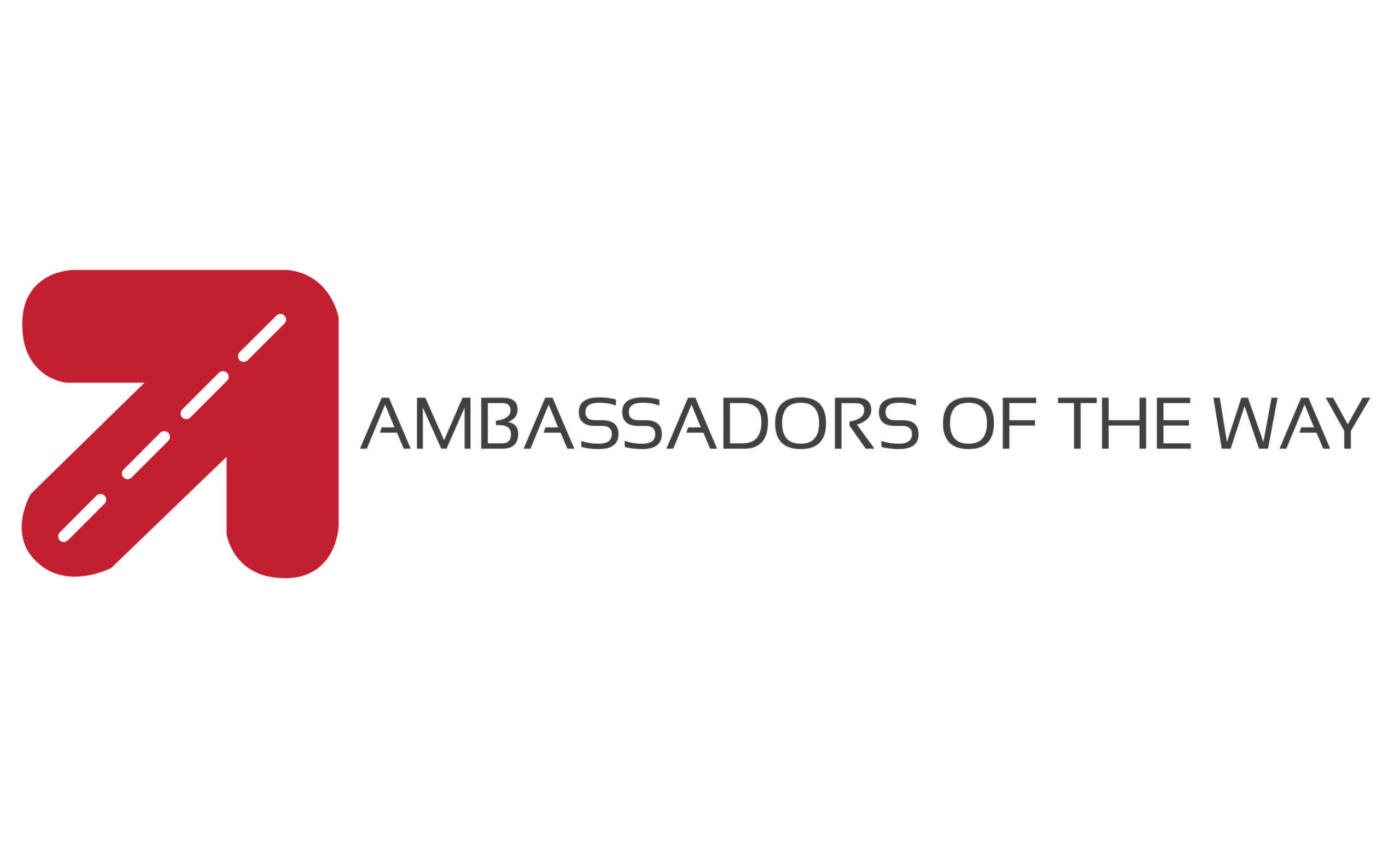
Performance Reviews: Overview & Tips from HR Experts
Performance reviews are a complex but essential tool in managing a productive and engaged workforce.
However, for performance reviews to deliver maximum value, they should adhere to standardized processes backed up by best practices. A process that is not well developed, regardless of how simple or complex, can actually become a liability, creating unnecessary confusion and frustration that leads to disengagement or even turnover. It definitely pays to think carefully about what your organization is currently doing and how it can improve.
If your organization is developing a standardized performance review process for the first time or looking to strengthen its existing practices, this complete guide can help. Here are the topics we will cover:
- Performance Review Basics
- Recommended Steps for Performance Reviews
- Performance Review Template
- Best Practices for Performance Reviews
- How to Prepare for Reviews
At RealHR Solutions, we help organizations create and improve their HR systems and practices, including those related to performance management. We know firsthand the impact that effective performance reviews can have on the underlying health of an organization. This guide will give you a solid foundation on which to build.
Performance Review Basics
1. What is a performance review?
A performance review is a regularly scheduled, structured meeting between an employee and their manager. Its core purpose is for the manager and employee to evaluate the employee’s work performance, the manager to provide feedback, and both to discuss the employee’s strengths and weaknesses that can be capitalized on or addressed.
This touchpoint gives the employee a clear sense of what they are currently doing well, how they can improve, and their progress towards achieving professional goals.
2. What is performance management?
Performance management is the broader process of how an organization manages its employees and evaluates work performance on an ongoing basis. Performance reviews are one part of performance management systems as a whole.
Organizations are increasingly shifting towards performance management models focused on continuous feedback, goal-setting, and course correction rather than relying on review meetings alone. However, performance reviews still serve a valuable purpose as standardized checkpoints for managers and employees to formally discuss performance.
3. Why are performance reviews important for employees?
Simply put, employees need to understand how they are performing to succeed and grow in their roles and within an organization. Performance reviews provide employees with the context and feedback they need to improve, develop, and feel invested.
Without performance feedback, employees can easily feel left adrift with no idea of where they can improve or how their contributions impact the organization as a whole.
4. Why are they important for organizations?
Effective reviews create a structured time and space for discussing performance in which both parties have clearly set expectations. They drive employee productivity, growth, and engagement—all of which are critical factors of long-term organizational success.
In addition, performance reviews reveal how the organization can improve its management and engagement strategies. They can also be used as an opportunity to discuss compensation changes in ways that are tied to performance.
5. How often should performance reviews occur?
Organizations typically conduct performance reviews annually, biannually, or quarterly. The right timeframe will depend on a number of contextual factors, but the most important point is that performance reviews should occur on a regular basis that is clearly communicated to employees in advance.
6. How do you prepare for performance reviews?
Effective performance reviews require plenty of preparation. The exact process will look different for managers and employees. We cover how both parties should prepare for reviews in a section below.

Recommended Performance Review Steps
Depending on your organization’s exact needs and circumstances, you may adjust some elements or logistical details of the performance review process, for instance when conducting performance reviews remotely. However, there are standard steps that you should keep in mind as you develop your organization’s own process.
At RealHR Solutions, we recommend these core steps and best practices for performance reviews:

- Organization presents performance review goals, plans, and processes.
- Start by nailing down a few essentials. What will your organization accomplish with this round of performance reviews? How exactly will the process work? When should employees and managers finish preparing, and when will the reviews occur? Will performance reviews be tied to compensation changes? Clearly communicate these objectives and details to the organization’s management teams and employees.
- Manager shares instructions and self-assessment with the employee.
- Managers should provide clean instructions and timeframes to employees who will be taking part in the performance review process. Self-assessments are an important component of effective reviews, so give employees plenty of time to complete them thoughtfully. Provide guidance on which types of input will be helpful as well as regular reminders leading up to the review meetings.
- Employee completes and shares their self-assessment.
- Self-assessments give managers more insight into their employees’ performance and allow employees to help actively guide the conversation. Performance review self-assessments typically ask employees to provide input on elements like:
- Their biggest accomplishments over the past performance period and why
- Their most notable shortcomings over the past performance period and why
- What they feel to be their biggest role-related strengths and weaknesses
- Areas where they would like to develop their skills or explore new responsibilities
- Feedback, both positive and constructive, on the organization’s management and/or their peers
- Questions about organizational decisions and goals
- Self-assessments give managers more insight into their employees’ performance and allow employees to help actively guide the conversation. Performance review self-assessments typically ask employees to provide input on elements like:
- Manager solicits feedback from employee’s peers, clients, and/or direct reports.
- Gathering feedback from a range of perspectives gives managers a clearer sense of their directs’ performance and how it impacts the organization as a whole. You may ask employees to provide feedback on their peers and managers as part of the self-assessment or follow-up separately. Clearly explain the types or scope of feedback that will be most helpful to keep this process focused and productive.
- Manager reviews employee self-assessment and completes the performance review form.
- The manager should next review the self-assessments, their own notes or records, past performance reviews, and feedback from other sources to then distill them into key takeaways. Focus on specificity, impact, and concrete examples. Organizations should use standardized forms (like the example below) to compile these takeaways and examples in a way that is truly helpful for both the manager and employee.
- Performance review meetings occur.
- The manager will walk through the completed form with the employee, pausing to discuss key points and answer questions throughout. The meeting should conclude by restating, realigning, or adjusting expectations and goals with the employee for the coming performance period.
- Compensation changes are reviewed (if applicable).
- If your organization has tied compensation changes to the performance review process, take time during the meeting or in a separate follow-up meeting to present and discuss salary decisions with the employee.
- Manager and employee regularly return to performance goals and discuss progress on an ongoing basis.
- The performance review process is most effective when backed up by ongoing feedback and conversations about goals. The manager and employee should refer to the employee’s performance goals throughout the year to check for alignment and progress. This reinforces strengths, addresses areas for development, and prevents unnecessary surprises for both parties.

Performance Review Template
During the performance review process, managers should review employee self-assessments, records from past reviews, peer feedback, and other notes to complete standardized performance review forms. No two performance review forms are exactly the same since every organization has unique contexts and objectives for the review process, but there are a few essentials that we recommend including.
This performance review template includes all of the most important elements to keep in mind:
- Employee Information: Include basic information needed for accurate record-keeping, like names, employee position, and the performance period.
- Core Values & Objectives: List out the role’s stated core values and objectives, each with clear definitions and/or criteria.
- For each value or objective, rate the employee on a scale from “exceeds expectations” to “unacceptable,” and include relevant notes and specific examples that back up the rating.
- The exact rating process that you use may vary. However, the main idea is to give this section a standardized, objective structure that clearly ties performance to your organization’s definition of success for that role.
- Performance Goals: Use this section to determine whether or not past performance goals were met during the previous period and to present new goals for the upcoming period.
- Overall Rating: Sum up the employee’s performance with an overall rating, again tying it to specific examples and what constitutes success for that role.
- Employee Comments: Leave space for noting questions, comments, and feedback provided by the employee during the meeting, and then act on them later as needed.
- Acknowledgment & Signature: Include a brief acknowledgment statement to be signed and dated by both the employee and manager.

Performance Review Best Practices
In addition to following the core steps listed above and using standardized review forms, there are additional performance review best practices that your organization should emphasize throughout the process:
1. Give everyone advance notice and clear explanations.
Performance reviews can be a stressful or tense experience for even your organization’s top performers. Give your entire team, both employees and managers, plenty of advance notice that performance reviews are coming up so that they will have time to prepare.
Additionally, your leadership and/or HR team should clearly explain to managers and employees how the process will work, what is expected of them, and when they should be ready. Make it easy to access the resources they will need, and set specific deadlines for completing self-assessments and performance review forms.
2. Ensure managers know how to properly prepare.
Performance reviews can have major impacts on employees’ experiences with your organization, so managers must properly and thoughtfully prepare ahead of time.
However, if managers feel ill-equipped or left in the dark about exactly how they should prepare, the process is already off to a rocky start. A poorly run performance review with inaccurate ratings or muddled takeaways can open up a variety of engagement and retention risks, both for the employee and the manager who needed more support.
A clearly defined performance review process with expectations, objectives, timeframes, and resources (like standardized forms) will be essential. Host one or more meetings leading up to the performance reviews dedicated specifically to answering managers’ questions and reviewing expectations.
3. Ensure job descriptions are up-to-date and accurately reflect the employee’s position.
Your organization’s job descriptions should accurately define each role’s core responsibilities, values, and objectives. These elements are used to measure success in each role, so outdated job descriptions can potentially become a source of frustration during the performance review process.
For instance, if a key responsibility has drifted from one role or department to another, but that change is not reflected in the current job descriptions, unnecessary confusion may arise about why employees did or did not spend time tackling that task over the previous performance period.
As managers prepare for performance reviews, they should review the organization’s job descriptions to see if they still accurately reflect employees’ work. If not, they should work with your HR team to develop updated job descriptions that reflect the current day-to-day responsibilities of the role. During or after the performance reviews, present the updated job descriptions to employees as needed, and have them sign to acknowledge their updated expectations.
4. Use clear language and focus on measurables, specific actions, and their impacts.
For performance reviews, clarity is key. Avoid over- or underexplaining important points. Reread your performance review forms multiple times prior to conducting meetings to ensure their points are clear, precise, and leave no room for misinterpretation. Tie these specific actions and examples to the real impacts that they had on the team or entire organization.
Pay extra attention to growth and development that employees have demonstrated, and emphasize continued growth during the conversation and in the next goals that you lay out for the coming performance period. A focus on development, forward momentum, and increased impact will foster engagement and retention over time, helping employees feel more invested in the organization’s success.
5. Provide truly actionable and honest feedback.
Performance reviews should give employees more insight into how well they are performing, the impacts they have, and how they can improve. Without honest feedback that can be concretely acted upon, employees can easily leave the conversation with more questions than answers.
One useful framework for providing actionable feedback is the Start, Stop, Continue model. This involves breaking feedback down into three categories:
- Tasks the employee should start doing
- Tasks the employee should stop doing
- Tasks the employee should continue doing
Sorting specific tasks or responsibilities into these categories gives the feedback a more tangible sense of direction and makes it clear to the employee where their time and attention is best spent. Just be sure to back up each individual task or piece of feedback with its impact or underlying reasoning. You may also ask employees to provide feedback about their manager or the organization as a whole using this same model.
When giving constructive or negative feedback, be tactful and sensitive but never avoid telling hard truths because it may be uncomfortable. If an employee is underperforming, they need to know. Starting an open conversation can show employees areas of improvement that they were perhaps unaware of. It can also reveal critical engagement and retention risks that the organization needs to address but would not have otherwise known about.
6. Establish clear, measurable goals for the next review period.
End performance reviews by outlining employee goals for the upcoming performance period. To be effective and truly useful for employees, these goals should be specific and measurable. Keep clear records of them, and regularly return to them throughout the next period, not just when preparing for performance reviews again.
When possible, create cascading goals for your organization. What are your organization’s big-picture strategic goals? What goals can you set at the departmental level and down to the individual level that will support those strategic initiatives? Setting interconnected goals in this way can show employees how their individual contributions directly tie into broader organizational success.
A culture of continuous improvement is a major asset for any organization. You can help foster that culture by using performance reviews as touchpoints for ongoing coaching, development, and improvement.

How to Prepare for Performance Reviews
Finally, here are some key steps that both managers and employees should follow when preparing for performance reviews.
How Managers Should Prepare
- Have consistent performance conversations with direct reports outside of the formal performance review process, and give both positive and construction feedback more frequently.
- Provide direct reports with clear timelines and instructions for performance reviews.
- Review all relevant notes, reports, emails, previous performance reviews, and more pertaining to the individual’s performance over the past period.
- Anchor the reviews with concrete measurables and specific impacts. Avoid generalized or overly subjective feedback.
- Give direct reports the opportunity to ask questions and to provide feedback on their peers and management, but keep the conversation focused on performance and impact. Note any tangential items for later follow-up.
How Employees Should Prepare
- Review all relevant notes, reports, previous performance reviews, and other resources pertaining to your performance over the past period.
- Get started on your self-assessment early to give the process careful thought.
- Choose a handful of concrete examples that illustrate key wins over the previous performance period. Compile any documentation or reports on impact that can back up your claims.
- Be prepared to receive feedback by realistically self-evaluating before review.
- Come with any questions directly relating to the performance conversation, the past performance period, and goals for the next period.
Wrapping Up
Performance reviews are just one part of the broader performance management process. They can be complex, but they are also a critical part of leading an organization that meets its goals, retains employees, and fosters growth.
Whether preparing to create or improve your organization’s performance review practices, there is always more to learn and changes to consider as your organization grows. Resources like this guide and the template above can give you a solid foundation on which to build. But remember that the most effective performance management processes will be tailored to your organization’s unique needs.
This is why many organizations choose to work with HR experts when considering performance management practices. Specialized HR consultants can provide guidance whether you are looking to build management systems from scratch, improve current practices, or simply provide better training to managers based on industry best practices.
RealHR Solutions is a leading provider of HR consultation services, including performance management guidance, employee assessments, job descriptions, and more. Contact us to discuss your needs, and be sure to keep learning with these additional resources:
- HR Audits: Frequently Asked Questions and How to Get Started. Unsure if your organization’s performance review process should be improved? An internal audit can reveal problem areas and outline an improvement roadmap.
- HR Assessments: The What, Why, When, and Who. If your organization needs a deeper analysis of your entire performance management practices, a broader HR assessment conducted by experts may be the right choice.
- Response to the Great Resignation. The COVID-19 pandemic has completely changed how organizations work. Get our take and learn how to strengthen your organization’s retention strategies with this guide.









